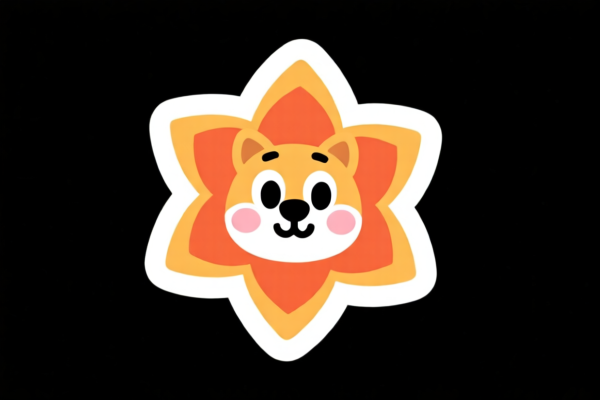| HS Code | Official Doc | Tariff Rate | Origin | Destination | Effective Date |
|---|---|---|---|---|---|
| 3919905060 | Doc | 60.8% | CN | US | 2025-05-12 |
| 3919901000 | Doc | 61.5% | CN | US | 2025-05-12 |
| 3926904000 | Doc | 32.8% | CN | US | 2025-05-12 |
| 3926909910 | Doc | 42.8% | CN | US | 2025-05-12 |
| 4823901000 | Doc | 55.0% | CN | US | 2025-05-12 |
| 4823907000 | Doc | 55.0% | CN | US | 2025-05-12 |
| 4821904000 | Doc | 55.0% | CN | US | 2025-05-12 |
| 4821902000 | Doc | 55.0% | CN | US | 2025-05-12 |




Foam Sticker
Foam stickers are decorative elements composed of a thin layer of foam adhered to a pressure-sensitive adhesive backing. They are widely used in crafts, education, and general decoration due to their lightweight nature, ease of use, and tactile qualities.
Material
The foam component is typically made from:
- EVA Foam (Ethylene-Vinyl Acetate): The most common material, known for its flexibility, durability, and low cost.
- Polyurethane Foam: Offers greater softness and cushioning but is generally more expensive.
- Polystyrene Foam: Less common due to its brittleness compared to EVA foam.
The adhesive backing is usually acrylic-based, providing a strong and lasting bond.
Purpose
- Decoration: Used for embellishing cards, scrapbooks, photo albums, gift packaging, and various DIY projects.
- Education: Employed in early childhood education for shape recognition, letter learning, and creative expression. Their tactile nature aids in sensory development.
- Arts and Crafts: A core component in numerous craft activities, allowing for easy application and vibrant designs.
- Event Decoration: Used for creating themed decorations for parties, school events, and other celebrations.
Function
Foam stickers function by adhering to a surface via the pressure-sensitive adhesive. The foam provides a raised, textured element, adding visual interest and a three-dimensional effect. They are designed for relatively easy removal, though residue may remain depending on the surface and adhesive strength.
Usage Scenarios
- Children's Crafts: Creating scenes, decorating artwork, and personalizing belongings.
- Scrapbooking: Adding embellishments and dimension to scrapbook layouts.
- Card Making: Decorating greeting cards and invitations.
- Home Décor: Applying to mirrors, frames, or walls for a playful touch (though long-term adhesion on walls may require additional adhesive).
- Classroom Activities: Creating learning aids, reward charts, and bulletin board displays.
Common Types
- Shape Stickers: Available in a wide variety of shapes (hearts, stars, animals, letters, numbers, etc.).
- Letter Stickers: Used for spelling names, creating messages, or labeling.
- Number Stickers: Used for counting, math activities, or age indication.
- Glitter Stickers: Feature a layer of glitter for added sparkle and visual appeal.
- 3D Stickers: Have a more pronounced raised effect, often with complex designs.
- Self-Adhesive Foam Sheets: Larger sheets of foam with an adhesive backing, allowing for custom shapes to be cut.
- Character Stickers: Featuring popular cartoon or movie characters.
- Alphabet Stickers (Braille): Used for educational purposes for visually impaired children.
Foam stickers typically consist of a plastic foam layer with an adhesive backing, used for decorative or functional purposes in crafts, packaging, or other applications. Based on the provided information, the following HS codes may be relevant:
- 3919905060: This code covers self-adhesive plates, sheets, film, foil, tape, strip and other flat shapes, of plastics, whether or not in rolls: Other: Other Other. This is a broad category encompassing various plastic-based adhesive products, and foam stickers could fall under this classification if they are in sheet or roll form. The total tax rate is 60.8% (5.8% base tariff + 25.0% additional tariff, increasing to 30.0% after April 2, 2025).
- 3919901000: This code specifically covers self-adhesive plates, sheets, film, foil, tape, strip and other flat shapes, of plastics, whether or not in rolls: Other: Having a light-reflecting surface produced in whole or in part by glass grains (ballotini). If the foam sticker incorporates a light-reflecting surface created with glass grains, this code may be applicable. The total tax rate is 61.5% (6.5% base tariff + 25.0% additional tariff, increasing to 30.0% after April 2, 2025).
- 4821902000: This code covers paper and paperboard labels of all kinds, whether or not printed: Other: Self-adhesive. If the foam sticker is applied to a paper or paperboard backing and is self-adhesive, this code could be considered. The total tax rate is 55.0% (0.0% base tariff + 25.0% additional tariff, increasing to 30.0% after April 2, 2025).
Important Note: The classification of foam stickers depends on their specific composition and application. If the foam is considered a plastic material, HS code 3919905060 or 3919901000 are more likely to be applicable. If the foam sticker is backed by paper or paperboard, HS code 4821902000 may be relevant.
Customer Reviews
No reviews yet.